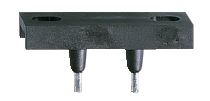Pozitif çalışmalı kapı kontaktları
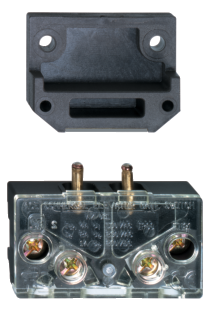
AZ 05...
- Termoplastik muhafaza
- Switchdeki kontakt pinler
- 1 Uyarı düzlemleri
- saydam kapak
- Kontakt köprülerinin sürtünmeli hareketi ile kendi kendini temizleme
- çift kapamalı switch
- tespit cıvataları M4 Pozidriv kendinden şekillenen, sökülemez, sabit
- Kapı kilitleme switchi/kilitleme aygıtı switchi
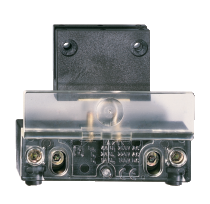
AZ 05
- Termoplastik muhafaza
- 1 Uyarı düzlemleri
- tespit cıvataları M4 sökülemez, sabit
- saydam kapak
- Kontakt köprülerinin sürtünmeli hareketi ile kendi kendini temizleme
- Switchdeki kontakt pinler
- Ek bir duvarla istenmeden sağlanan temaslara karşı koruma
- AZ 05x e uygun bağlantı ölçüleri

AZ 06...
- Termoplastik muhafaza
- Koruma sınıfı IP20
- Aktüatör köprüsünde kontak pini
- 1 Uyarı düzlemleri
- saydam kapak
- Kontakt köprülerinin sürtünmeli hareketi ile kendi kendini temizleme
- tespit cıvataları M4 Pozidriv kendinden şekillenen, sökülemez, sabit
- çift kapamalı switch
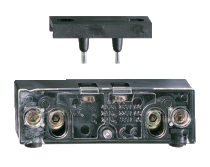
AZ 06
- Termoplastik muhafaza
- Koruma sınıfı IP20
- Aktüatör köprüsünde kontak pini
- 1 Uyarı düzlemleri
- tespit cıvataları M4 sökülemez, sabit
- saydam kapak
- Kontakt köprülerinin sürtünmeli hareketi ile kendi kendini temizleme
- Ek bir duvarla istenmeden sağlanan temaslara karşı koruma
- AZ 06x e uygun bağlantı ölçüleri

AZ 07
- Termoplastik muhafaza
- Koruma sınıfı IP20
- Aktüatör köprüsünde kontak pini
- 1 Uyarı düzlemleri
- tespit cıvataları M4 sökülemez, sabit
- saydam kapak
- Kontakt köprülerinin sürtünmeli hareketi ile kendi kendini temizleme
- Montaj yuvaları bulunan ek
- AZ 06x e uygun bağlantı ölçüleri

AZ 08
- Termoplastik muhafaza
- Koruma sınıfı IP20
- Aktüatör köprüsünde kontak pini
- 1 Uyarı düzlemleri
- Kontakt köprülerinin sürtünmeli hareketi ile kendi kendini temizleme
- Montaj yuvaları bulunan ek
- Birbirinden ayrılamaz gövde ve kapak
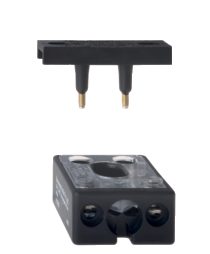
AZ 09
- Termoplastik muhafaza
- Koruma sınıfı IP20
- Aktüatör köprüsünde kontak pini
- Kontakt köprülerinin sürtünmeli hareketi ile kendi kendini temizleme
- 30mm x 38mm x 15,5mm

AZ 13
- Termoplastik muhafaza
- Koruma sınıfı IP20
- Aktüatör köprüsünde kontak pini
- Kontakt köprülerinin sürtünmeli hareketi ile kendi kendini temizleme
- Montaj yuvaları bulunan ek
- Birbirinden ayrılamaz gövde ve kapak
- 2 uyarı düzlemleri
- Yan ve alt taraf kablo girişi
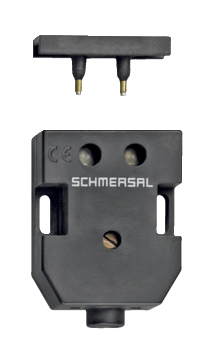
AZ 14
- Termoplastik muhafaza
- Koruma sınıfı IP20
- Aktüatör köprüsünde kontak pini
- Kontakt köprülerinin sürtünmeli hareketi ile kendi kendini temizleme
- 2 uyarı düzlemleri
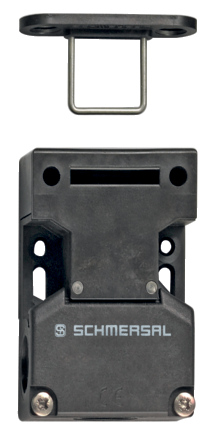
AZ 15
- Termoplastik muhafaza
- Çift izolasyonlu
- Uzun ömür
- 52 mm x 75 mm x 30 mm
- Çoklu kodlama
- Geniş kablo döşeme kompartımanı
- Düşük gerilim ve akımlarla yüksek seviyeli kontakt güvenirliliği
- Kanallı delikler ayar için, dairesel delikler konumlama için
- Kirlenmeye karşı duyarsız
Uygulama alanı
AZ serisi pozitif açık devreli kapı kontaktları on ayrı versiyonda kullanılabilir, böylece her tür asansör için kapı konumunun ya da kilit mekanizmasının (kanca mili) izlenebileceği uygun bir kontakt kullanılabilir. Bunlar Avrupa ve Amerika standartlarına göre test edilip onaylanır.
Tasarım
AZ emniyet anahtarlarında, anahtarlama unsuru ve aktüatör tasarım açısından birbirlerine bağlı değildir. Ancak anahtarlandıklarında işlevsel olarak birleşir ya da ayrılırlar. Emniyet cihazı açıldığında aktüatör temel cihazdan ayrılır. Bu süreçte emniyet anahtarındaki NC kontağı pozitif kesme ile açılır.
Anahtarın sabitlenmesi için yuvarlak veya uzun delikler mevcuttur, bazı tiplerde kaybolmayan sabitleme cıvataları teslimat kapsamına dahildir.
AZ serisi pozitif açık devreli kapı kontaktları on ayrı versiyonda kullanılabilir, böylece her tür asansör için kapı konumunun ya da kilit mekanizmasının (kanca mili) izlenebileceği uygun bir kontakt kullanılabilir. Bunlar Avrupa ve Amerika standartlarına göre test edilip onaylanır.
Tasarım
AZ emniyet anahtarlarında, anahtarlama unsuru ve aktüatör tasarım açısından birbirlerine bağlı değildir. Ancak anahtarlandıklarında işlevsel olarak birleşir ya da ayrılırlar. Emniyet cihazı açıldığında aktüatör temel cihazdan ayrılır. Bu süreçte emniyet anahtarındaki NC kontağı pozitif kesme ile açılır.
Anahtarın sabitlenmesi için yuvarlak veya uzun delikler mevcuttur, bazı tiplerde kaybolmayan sabitleme cıvataları teslimat kapsamına dahildir.
.png?id=1108beb2a1337fe973af0aa6b25231c9)
